Creating Open Frame Radiator Screen Cabinet Doors
A few months ago when I got the call that Woman’s Day wanted to send a photographer to photograph me and my garage, I kind of freaked a little. I mean, it was my garage, the least attractive room in our house! Part of the unattractiveness stemmed from my workbench with a huge gaping hole in it.
It was suggested that I could just cover the hole with some fabric (which, yes, I could have done.) But, being that it is my workshop and a sawdust producing place, I felt I could do a little a little better than just some fabric. I decided to build custom doors for the opening. Luckily they turned out to be less of an involved project than I originally anticipated. (I love when that happens.)
Come on in the workshop and I’ll show you how I built these open frame cabinet doors.
Materials:
- 1×4″ pine boards
- Tape measure
- Drill
- Kreg jig
- Kreg screws
- Clamp
- Shims
- Level
- Radiator screen
- Tin snips
- Staple gun
- 1/4″ staples
- Hammer
- Primer
- Paint
- Hinges
- Trim moulding (optional)
- Wood glue
- Finish nailer (to install trim moulding)
Instructions:
Measure the height of the opening.
Cut four 1″x4″ pine boards to the height of the opening (minus 1/4″).
Lay the four boards into the cabinet opening. Center the middle two boards on the center of the hole. Lay the hinges between the two outer boards and the edge of the hole in the cabinet. This will allow room for the hinges when the doors are installed. Measure the width between the outer and inner boards. The measurement should be the same on both sides.
Cut four 1″x4″ pine boards for the tops and bottoms of the doors using the width measurement you just took.
Use a kreg jig to create pocket holes in the width pieces. Two holes per side. (New to a Kreg Jig? Why not Learn how to use a Kreg Jig here.)
Clamp the cabinet door together. Use your drill to drive kreg screws into the pocket holes and secure the top and bottom of the frame to the sides.
Attach the hinges to the face frame of the workbench cabinet.
Insert the open frame door into the cabinet hole. Use shims to raise the frame slightly off the base. Use a level to make sure the cabinet door is level. Then attach the hinges to the door.
By the way, Irwin just sent me that little Series 250 Magnetic Torpedo Level and this little guy really rocks! It has more bells and whistles than I’ll ever use. (Like earth magnets for holding it against metal. And a 1.5 degree button for setting drainage pipe. A handy girl never knows when she’ll be laying drainage pipe next!) But, mainly it works great for tight spots when you want to make sure your doors are level.
Optional: The top of the workbench opening wasn’t a perfectly straight cut, so I decided to add a little decorative moulding to the top to hide the imperfections. Cut the piece of mounding to the same width as the cabinet door. Add some wood glue to the back and then secure the trim with finish nails.
I also cut another piece of mounding to hide the center gap and secured it the same way to the side of one of the doors.
Double check to make sure that the doors fit and open and close properly.
Remove the doors and prime and paint the cabinet door frames.
After the paint dries, measure and cut radiator screen to 2″ larger than the frame opening.
Secure the radiator screen to the back of the cabinet frame with the staple gun. Any staples that don’t sink all the way in can be tapped in with a hammer.
Re-install the cabinet doors and admire your handy work!
Now you see it, now you don’t! Attractive open face cabinet doors to hide your junk.
What do you think? Better than fabric? Can you think of anywhere that you could add open faced cabinet doors? They’d make great speaker cabinet doors or privacy screen.
See ya’ later alligator.

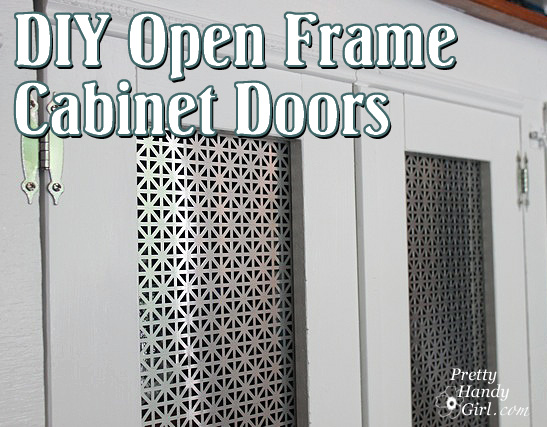
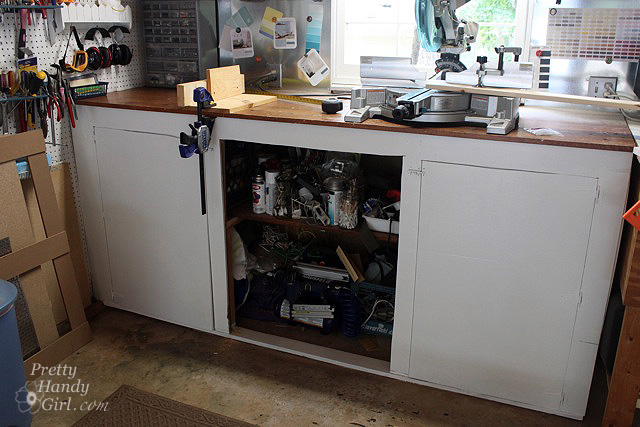
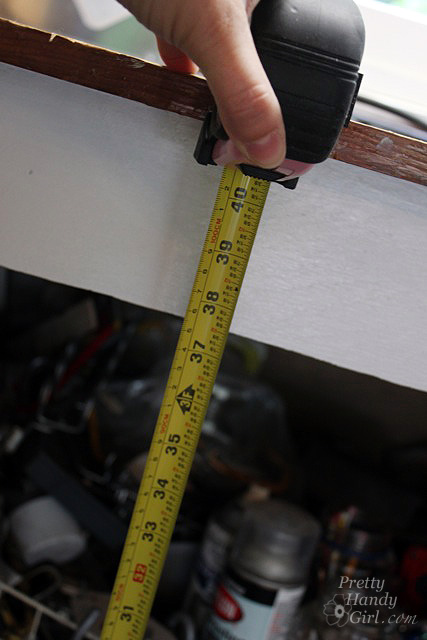
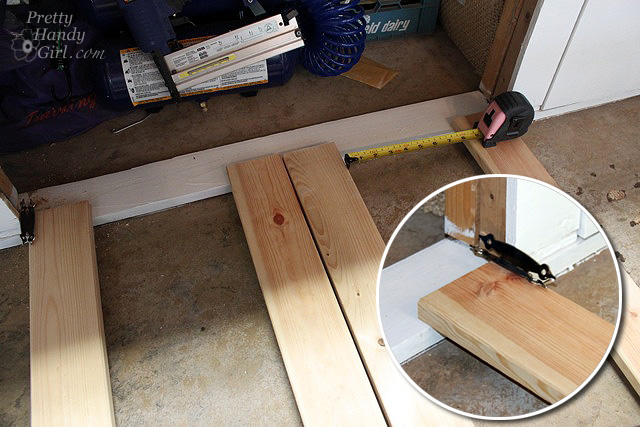

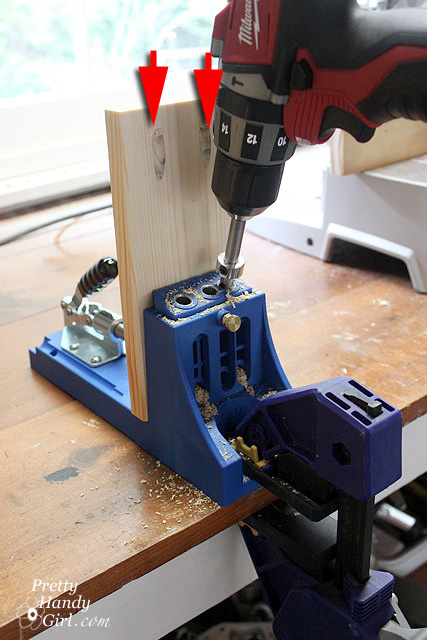
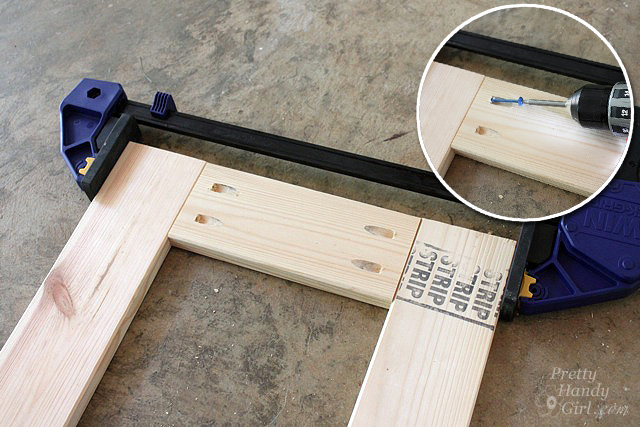
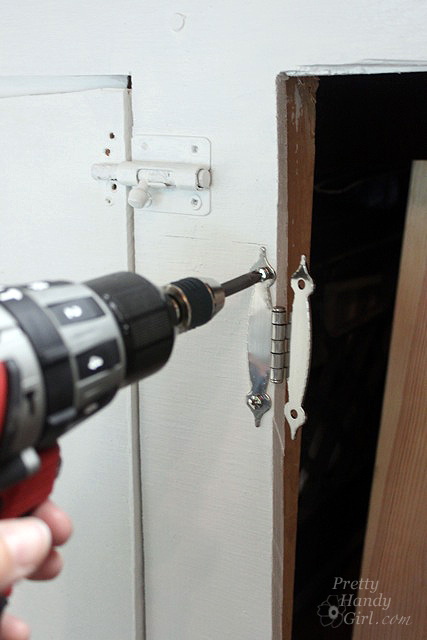
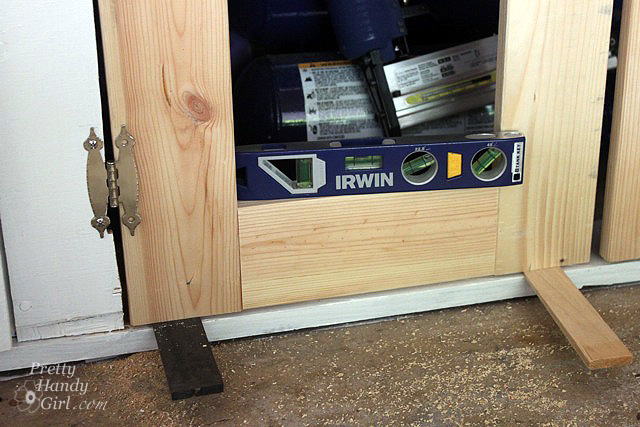
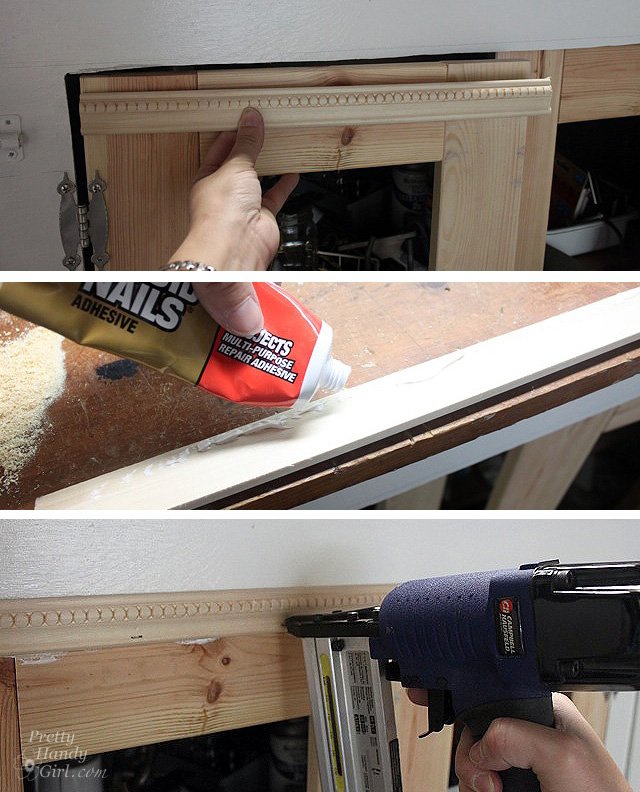
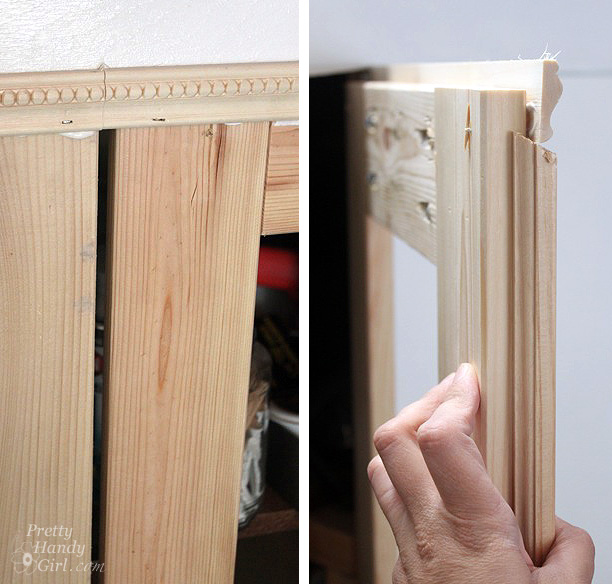
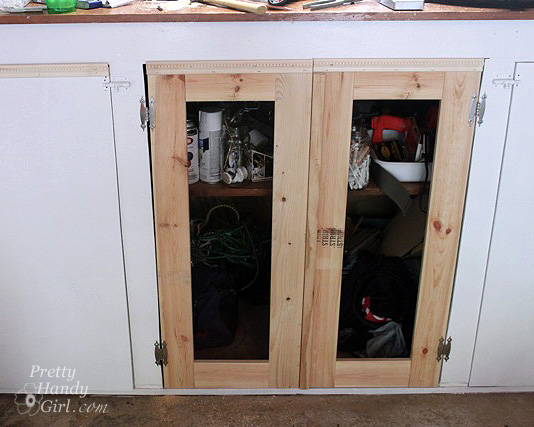
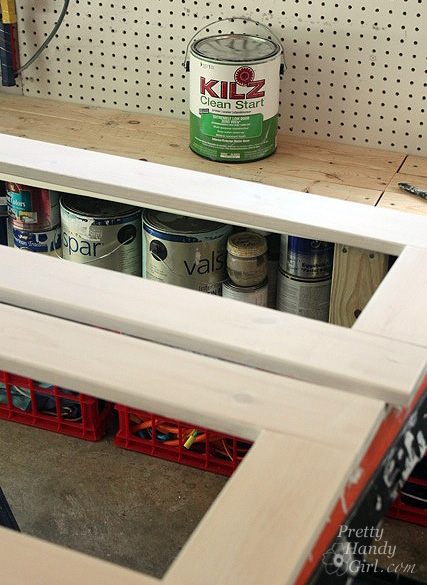
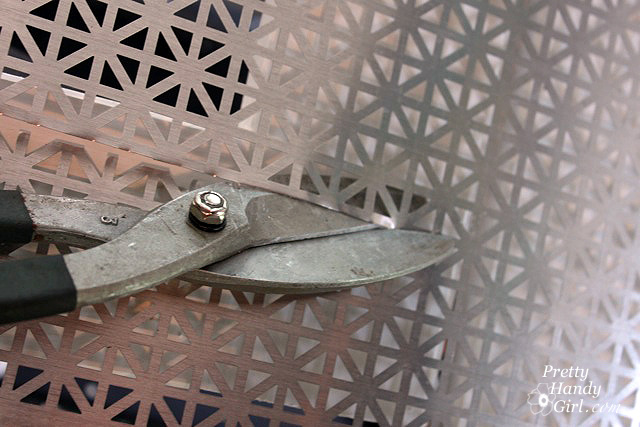
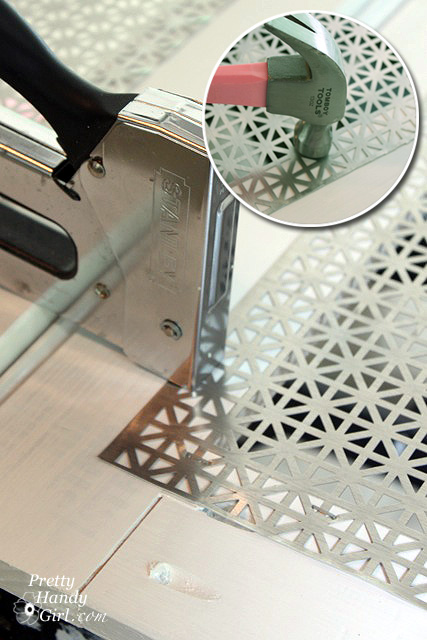
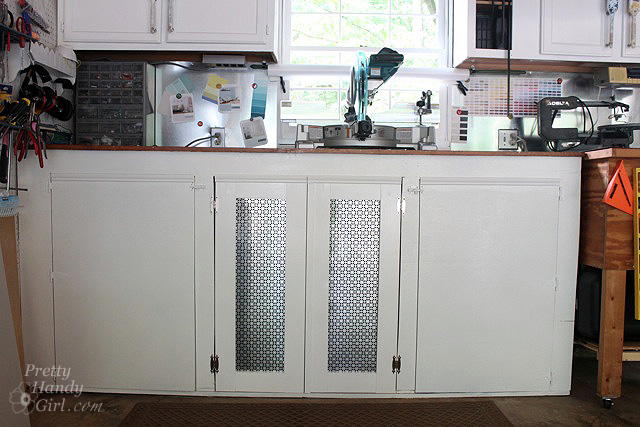
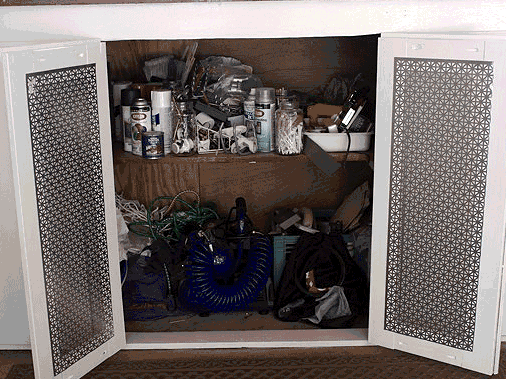
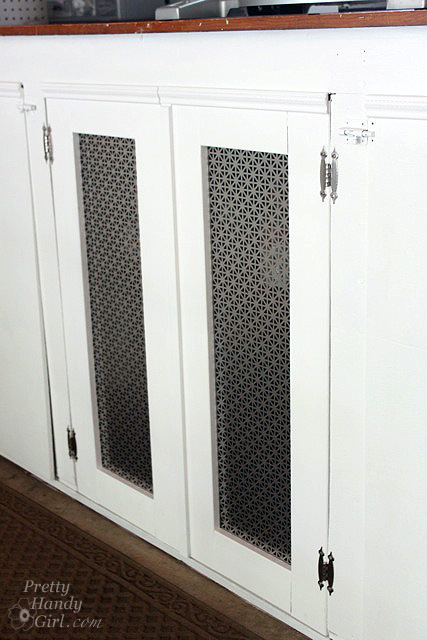

Fantastic tutorial – looking forward to trying it out! Where did you get your radiator screen? I have the exact same pattern in the house I just bought & would like to add a couple more cabinets to match!
I bought them at our local Lowe’s Home Improvement store.
Um, wow, just wow. Why the negativity? I’m sure with Brittany’s skills, if she wanted to make these up to par with say, kitchen cabinetry with inset panels, she would have. but these doors were for a work bench in her garage. I don’t know anyone else that has “pretty” cabinets in their garage for a workspace. That would be silly considering the amount of abuse they could be facing. These look perfectly sturdy and nice to boot. Good job, Brittany!!
The worst bit of craftsmanship I have ever seen, stick to sewing. ?
This doesn’t apply to you, anyway. You could just use a matchbook to hide your own junk,
Have you ever thought about publishing an ebook or guest authoring on other websites?
I have a blog based on the same information you discuss and would
love to have you share some stories/information. I know my readers
would enjoy your work. If you are even remotely interested, feel free to send me an email.